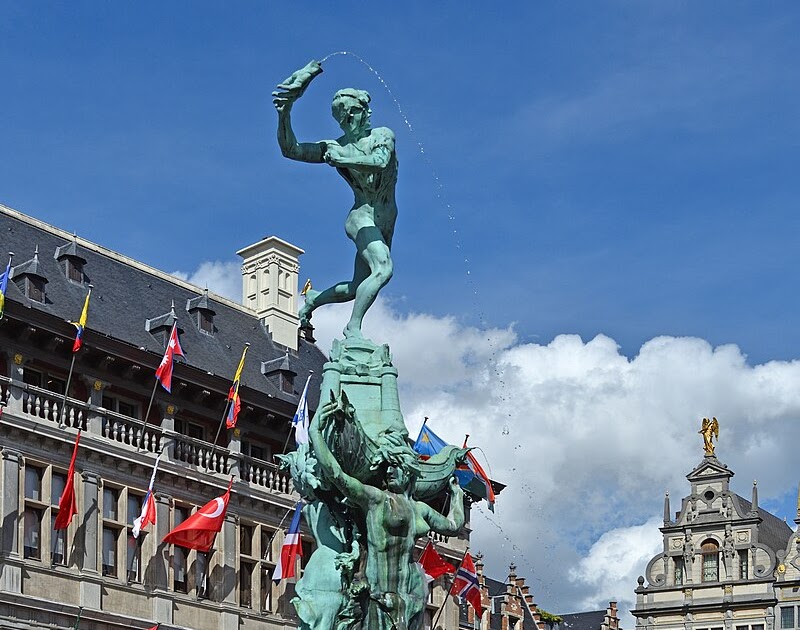SMOOSH JUICE
Setting Folklore

I was on vacation last week and visited Antwerp where I saw the Brabofontein in the Grote Markt. It depicts events related to the legendary founding of Antwerp, where Roman soldier Silvius Brabo defeated Druon Antigonus, who had been demanding tribute to use a bridge over the River Scheldt. Brabo’s killing of the giant provides the folk etymology of the origin of the name Antwerp as Brabo did to Druon what the giant had done to unfortunates who couldn’t pay his toll: he cut off his hand and threw it across the river. Hence, the name Antwerp is supposed to come from handwerpen (throwing hands).
Anyway, the legend and the statue caused me to consider why isn’t there more of this sort of folklore and folk etymology in settings? I sort of did some of this with the City and Weird Adventures (see “Thraug’s Head“, and perhaps “Saint Joan of the City” and “Short People, Big Worm“–admittedly, these blur the lines because they are depicted as relating history, not folklore, but I think they serve a similar purpose in their fancifulness and mostly not direct applicability to adventuring), but I haven’t really done much of that in other settings.
I feel like little details like this both make places feel more real, but also potentially provide springboards for adventure because in fantasy worlds, even the strangest details might well be true. I suppose some people might think this sort of thing is excessive or maybe even unhelpful because it might confuse player’s about what’s true and what isn’t, but I would argue a ruthless economy of setting details, limiting them to only things relevant to adventuring/dungeoncrawling and the need for every one of those details to be literally true or at least definitively falsifiable loses an aspect that differentiates rpgs from other sorts of games, that is, the ability to truly explore an imagined world.

